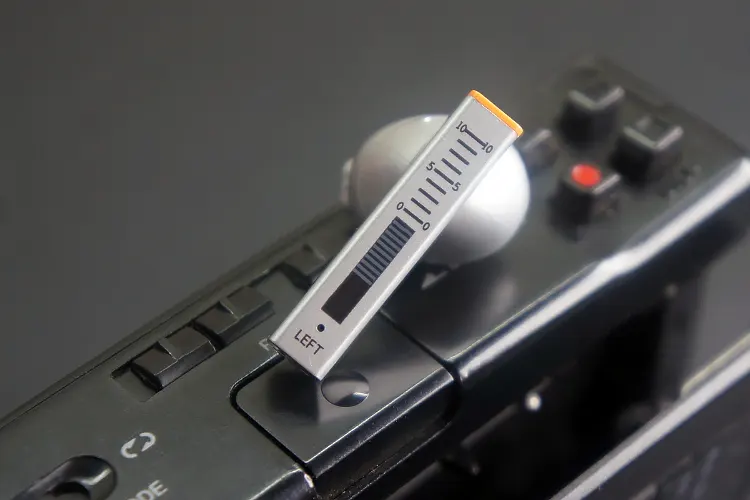Sound Impressions
EQ Profiles
Out of the box, the Golden Ages and the MOONDROP Link 2.0 app comes with three EQ profiles: Reference, Monitor, and Basshead.
All 3 profiles are quite similar, with the primary difference being the bass level. The monitor profile has the least bass, the Basshead profile has the most bass, and the reference profile lies in between.
In acoustic and more balladic tracks with little to no thumping sub-bass, the difference between the three EQ profiles becomes hard to distinguish, however, the subtle differences start showing themselves in more modern pop tracks and Hip-Hop tracks.
The Reference profile was my preferred EQ setting, however the Basshead profile was a close second. It is one of the more tasteful bass boost profiles I’ve heard, with the boost being applied in the sub-bass region, creating bass that is more “felt” in your chest without bleeding into the mids.
The 1.1.0 version adds two new EQ profiles: the “5128 Target” and “Secret” profiles. The 5128 profile maintains the “Basshead” profile’s sub-bass performance and boosts the mid-bass as well.
This mid-bass boost gives the mids region a more recessed feel, with vocals and string instruments being played back with less clarity and musicality
The “Secret” tuning profile does not boost the sub-bass and mid-bass levels beyond that of the “Reference” profile, but it does boost the volume of the mids.
This, however, gives vocals a shoutier and more veiled tonality that I did not enjoy. Amongst the 5 EQ profiles available, I enjoyed the “Secret” profile the least.
The majority of the impressions below were done with the Reference profile, which I preferred the most.
Bass
With a more neutral sound profile on its reference setting, the Golden Age’s bass implementation places a larger emphasis on the sub-bass region. Despite not having the most bass quantity, bass hits, and lower-pitched percussive tones are played back with good note weight.
In more stripped-back pop tracks, rhythmic sub-bass hits in the background do a good job of setting tempo without stealing the attention from vocals, strings, cymbals, and other instruments in the mix.
These sub-bass notes are not particularly tactile or textured, often coming off as one-dimensional in complex mixes, but they are sufficient in contributing to the overall tapestry of the song.
Unfortunately, deep synths and bass guitars are presented thinly, lacking an atmospheric sense of authority that usually shines through in funk and disco mixes. This lack of warmth and low-end body contributes to a lean sound signature that does not bleed into the mids.
Bass heads purchasing the Golden Ages for more bass-dependent tracks may be left disappointed. Even in the basshead profile, the Golden Ages opts for a bass profile that hits deep with little impact.
However, this lack of warmth and low-end body contributes to a lean sound signature with a clear mid-range.
Mids
The Golden Ages has a clean, musical-sounding mid-range that expertly balances acoustic and electric string instruments, vocals, and brass instruments with good instrument separation and note weight.
In rock and pop tracks, electric guitars shine through the mix and are played back with a satisfying yet visceral tonality, driving an infectious sense of energy throughout the track.
Its resolution and clarity in the mid-range string instruments are by no means a standout, but they are sufficient to not detract from the pleasing and exciting tuning.
With the IEM’s good instrument separation, complex tracks are played back with no sense of vagueness, with each instrument being easily distinguishable and expertly positioned within the sound stage.
Snare drums in more balladic tracks with a level of bluntness that ensures they do not come off as sibilant, but this ends up making them sound hollow and one-dimensional.
It does not detract too much from the overall sound profile of the IEMs, however I expected slightly better resolution and technicalities from the Golden Age’s Planar Drivers.
Both male and female vocals follow suit, exhibiting a clean tonality that lets the singer’s performance take center stage, but with only average levels of clarity and resolution. Male vocals lack the deep, tactile authority of warmer-sounding IEMs, hindering their atmospheric impact.
Treble
The Golden Ages does not have the industry-leading sense of air and sparkle that wired planar IEMs are known for. Cymbals and chimes have a veiled tonality, hindering pop and rock tracks’ excitement potential.
Despite this veiled tonality, instruments on the higher end of the treble cut through with a shrill sibilance. The magnitude of this sibilance is not too offensive, less treble-sensitive listeners may not even recognize this.
However, with my inclination to more neutral-warm sound signatures, these peaks and sibilance were constantly a bother, especially in complex EDM mixes where these instruments sound like they’re on the verge of distortion.
Staging
The Golden Age’s imaging and instrument separation are quite good for a set of TWS IEMs, making it easy to place sounds within space and ensuring that individual notes are presented with good detail.
Amongst all the TWS sets I’ve tried, the Golden Ages was the best at positioning different instruments within a space, even in complicated modern mixes.
Similarly, the staging of the Golden Ages is decently wide. It doesn’t achieve the full 360-degree soundscape that larger and airier IEMs or headphones do, but it can create an encompassing sound stage that contributes to a very pleasing atmosphere when listening to more complex arrangements.
Wireless Performance
Pairing
The Golden Ages paired quickly and seamlessly with any source device I tried, may it be macOS laptops, Windows computers, iPhones, and Android Smartphones. After holding the unit’s pair button for 3 seconds, the Golden Ages appears in the source device’s Bluetooth Menu quickly.
Throughout daily usage, opening the lid of the Golden Ages automatically connects the IEMs to my iPhone. I observed my iPhone registered the unit’s Bluetooth connection quickly, even before I placed the IEMs in my ear.
Throughout initial pairing setup and daily usage, the Golden Ages consistently responded quickly and conveniently.
Stability and Range
When the Golden Ages is connected to my phone, the connection remains generally stable even as I start walking away.
It was only when I moved 2 rooms away, at about 10-12 meters, that I noticed that the audio signal began to drop. This is more than acceptable for my standards since the Bluetooth signal needed to pass through at least 3 layers of concrete walls before the dropouts started.
I had to go to the lower story of my house, which is around 13-15 meters away, for the signal to completely cut out.
Latency
The Golden Ages transmits its audio signal with very little latency. Throughout my gaming performance, I did not experience any observable lag or delay. With more formal latency tests, I found that the Golden Ages had a latency of around 0.25ms.



